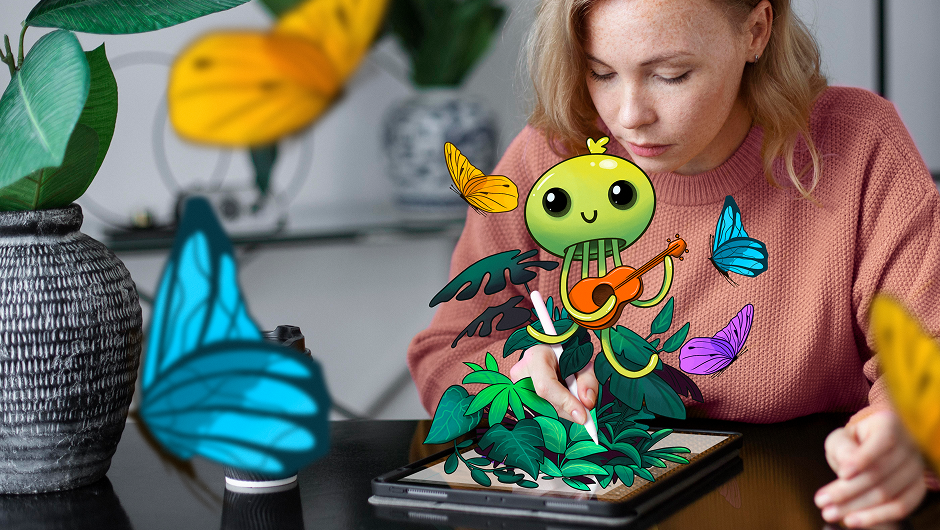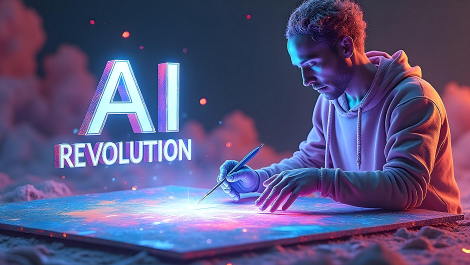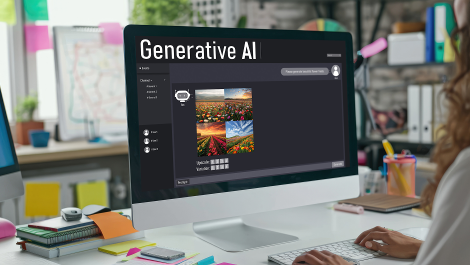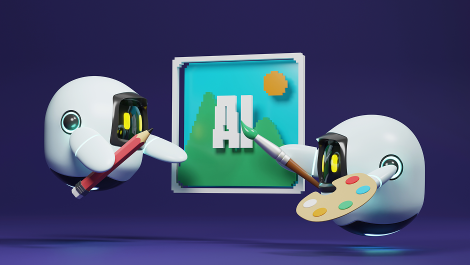How AI is Changing the Future of Thumbnail & Visual Design
25 Sep 2025

In the attention economy, the thumbnail is the ultimate gatekeeper, and Artificial Intelligence is rapidly transforming how this crucial visual is created. AI isn't just a new tool for designers; it’s a co-creator that is redefining the very workflow of visual storytelling, making design faster, smarter, and far more personalized.
The End of Repetitive Drudgery
The most immediate and powerful shift AI brings is the automation of repetitive tasks. Think about the hours a designer spends manually resizing one graphic for TikTok, Instagram, and YouTube, or the time spent meticulously removing a background from a hero image. AI tools now handle this grunt work in seconds.
By automating functions like background removal, instant format resizing, and basic color correction, AI frees human designers from production-line tasks. This shift allows the creative professional to spend more time on what truly matters: creative strategy, concept ideation, and defining the emotional tone of the visual, rather than mechanical execution.
The Power of Data-Driven Clicks
Historically, a designer relied on intuition and past successes to create a thumbnail. Today, AI introduces predictive analytics into the visual creation process. This means that AI tools can analyze mountains of data on viewer behavior, identifying which color palettes, facial expressions, text placement, and even emotional cues result in the highest Click-Through Rate (CTR) for a specific topic or audience segment.
This data-driven approach is a game-changer. Platforms like Netflix already use personalized thumbnails, generating different visual options for the same show based on a user’s viewing history. The future of design is hyper-personalized, where an AI-assisted designer crafts a thumbnail that is statistically optimized to appeal to a specific niche audience, moving design from guesswork to scientific optimization.
AI as a Creative Catalyst
Generative AI, the technology behind systems like Midjourney and Adobe Firefly, has become an instant creative sparring partner. Instead of starting a design from a blank canvas, a designer can input a text prompt and receive dozens of distinct visual concepts—from photorealistic images to abstract art—in seconds.
This capability fundamentally changes the ideation phase. AI doesn't replace the initial creative thought, but it acts as a massive brainstorming engine, allowing the designer to quickly test and iterate on styles they might never have considered. The most successful designers of tomorrow won't be those who fight AI, but those who learn how to prompt it effectively, taking the best AI-generated foundation and applying their unique human touch, taste, and brand strategy for the final, polished result.
The Hybrid Designer is the Future
The future of visual design isn't about human versus machine; it’s about human-AI collaboration. AI excels at speed, scale, and data analysis. Humans excel at empathy, conceptual thinking, and artistic judgment.
The modern designer’s role is evolving from a craftsperson who physically creates every pixel to an Art Director who manages and refines AI outputs. By combining the efficiency of AI with the irreplaceable human understanding of brand storytelling, cultural nuance, and emotional resonance, designers can create visual content faster, cheaper, and more effectively than ever before. This is a transformation that elevates the designer, allowing them to focus on impact while the technology handles the heavy lifting.


